What to Expect During Your Roof Inspection
Are you noticing signs of a roof leak? Do your shingles look a little worse for wear? Don’t panic! We’re here to help.
Your roof features several different layers of materials that all work together to form a complete roof system. While every layer is required for a healthy roof, one of the most crucial is roof decking. It’s the foundation for your entire roof system.
In our 30+ years of roofing experience, we’ve always walked homeowners through a thorough explanation of their roof so they know exactly what they’re paying for when they get a replacement. That’s why we’re going to break down everything you need to know about roof decking.
By the end of this article, you’ll know:
Alright, let’s get into it!
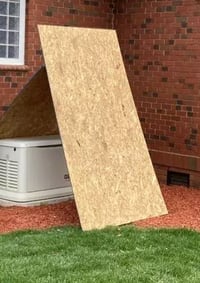
Roof decking, also called sheathing, is the foundation of your roof that connects it to the frame of your home. It’s the base that lays on top of your attic’s structural trusses to cover the rafters and support the weight of shingles and other roofing materials.
This layer of your roof is integral to the health of the entire roofing system. If your decking isn’t in good shape, you can be sure that the rest of your roof isn’t going to be. We’ll talk some more about this in a minute, but this is why it’s imperative that you don’t just install a new roof on top of the old one.
Roof decking is typically made with one of four materials, some of which are more ideal for certain residential roofing systems:
Oriented Strand Board (OSB) - This is by far the most common type of roof decking material used today. That's because it’s durable, readily available, and relatively inexpensive. OSB is made by compressing layers of wood strands together with adhesives. The strands are oriented to overlap each other, creating a stronger board.
Plywood - Construction-grade plywood is another common roof decking material. They follow the same installation methods as OSB roof decking.
Plank Sheathing - While not as common as OSB and plywood, plank sheathing is used for certain types of roofs, such as wood shakes. This decking features wood planks spaced about one and a half inches apart.
When you get a roof replacement, you might have to replace sections your roof decking. Because it lays under the shingles, it can be difficult to tell its condition until the old roof has been torn off.
Like we mentioned earlier, this is why in most cases you shouldn’t get a “roof-over” which means installing a new layer of roofing material on top of the pre-existing one. If the roof decking underneath a roof has already received some damage or started to rot, it will only get worse over time, and contribute to weakening the entire roof system.
There are a number of signs of roof rot, such as moldy smells, wet walls, and consistent leaks when it storms. If your contractor finds that the decking is rotten, sprinkled with black mold, or shows heavy water damage, it will need to be replaced. However, decking isn’t usually completely replaced; only the sections with such conditions will need replacement.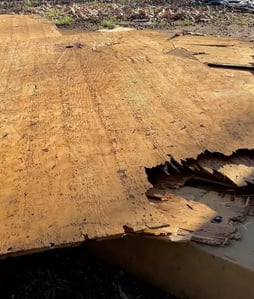
There are however a few cases where the entirety of the roof decking will need to be replaced. The main one of these will be that the decking was installed to a building code that has been updated. Older codes did not require decking to be as thick, or as close together, as they do now, so if you haven’t gotten a roof replacement in some time, your roof decking may need to be updated. Also, in circumstances where a roof has really taken a beating and not repaired over the years, the damage may be so widespread that it all needs to be replaced. This is especially true on older roofs that are well past their lifespan, where the shingles have dried out, become brittle, and no longer offer much protection.
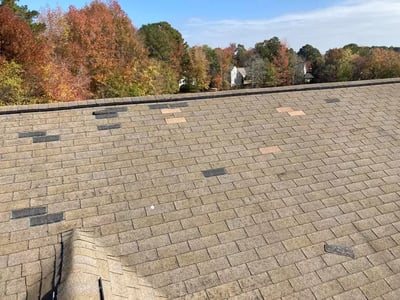
When it comes to your roof, water or any form of moisture is enemy number one. Roof decking is particularly susceptible to water damage since it’s made from wood and wood composites.
Water can make its way into your roof in a variety of ways. Old or worn out shingles, clogged gutters, improperly installed flashing, snow or ice dams, a buildup of humidity and heat in the attic, and improper roof ventilation can all let water and moisture into your roofing system and lead to rotted decking.
If you’re seeing wet spots on your ceiling, stains on interior walls, water stains on your rafters, or a sagging roofline, there’s a good change that you have some rotted roof decking that you’ll need to take care of.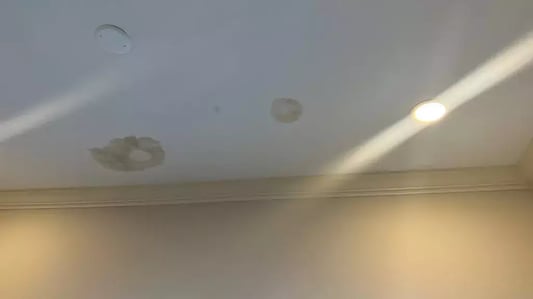
All of the signs we just mentioned are primarily caused by roof leaks. A quick inspection of the attic might uncover dark water stains on the rafters or in the insulation, or even light passing through holes in the roof. If left undetected, mold and mildew will develop in the walls, ceilings and insulation.
A sagging ceiling or roofline is another clue that there are major problems with a roof’s decking and the roofing structure. Soaked or waterlogged decking can warp, which can lead to a bowed or wavy roofline and ceiling.
If you suspect that you might have a leak in your roof, or a major storm has recently blown through your area, the best next step is to get it inspected, so that a professional can determine what you might need to get the right fix.
Want to learn more about what that inspection might look like? Check out our Guide to Getting a Roof Inspection!
On Tops Roofing has been helping educate Raleigh homeowners about the roofing process since 1991. Whatever your roofing project requires, We’re on it!
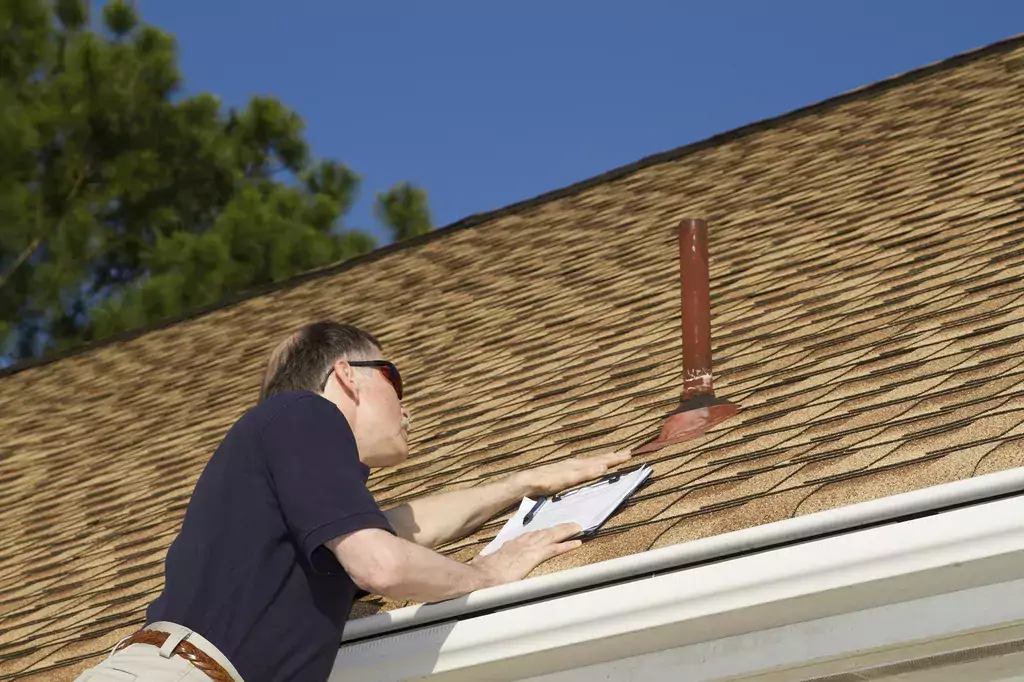
Are you noticing signs of a roof leak? Do your shingles look a little worse for wear? Don’t panic! We’re here to help.
_WebP.webp)
When it comes time for a roof replacement, it can be overwhelming to hear unfamiliar roofing terms casually tossed around like you’re supposed to...
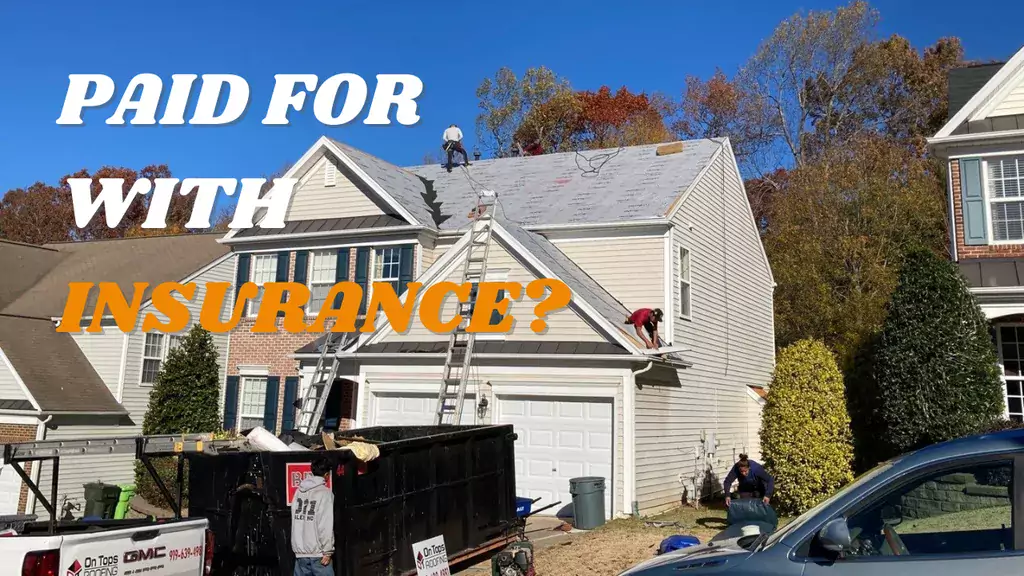
Severe storms stir up all kinds of trouble. They can cause floods, blow around your outdoor furniture, damage cars, and most pertinent to us, wreak a...